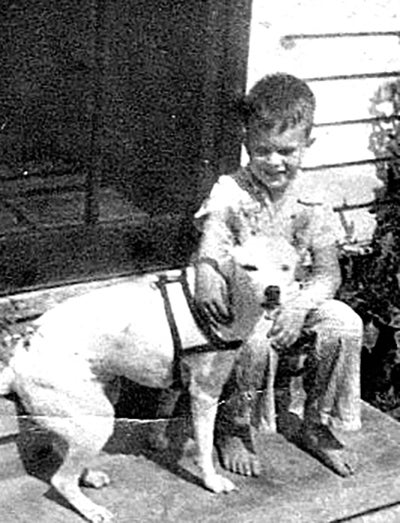And Now You Know: Texas Creosote Plant: The beginning and the operation
Published 12:16 am Saturday, January 30, 2021

- And Now You Know
|
Getting your Trinity Audio player ready...
|
(Editor’s note: This is part one of a two-part series.)
In the early 1920s, a group of Orange businessmen began discussing the prospect of building a plant in Orange to treat utility poles and other large timber products with creosote. It was eventually decided that there was a need for a plant and that it would be built in Orange.
Construction of the Texas Creosote Company plant began in 1923 at the intersection of Border Street and what would later become known as DuPont Drive. The complex was budgeted to cost $25,000, would cover several acres and extend to the Sabine River. The company would have private dock facilities and four miles of railroad tracks and sidings. Four 15-ton locomotive cranes would be used to move huge piles of lumber products to and from the processors. An estimated 30 million board feet of products such as utility poles, bridge lumber, signposts, and fence posts would be processed annually in the two large cylindrical processers of the plant.
There would be between 150 and 200 people employed in the plant, including office workers and those who worked in the yard making the products.
The trade name of the product would be “Black Beauty”. The company’s main product, the utility poles, would be trademarked with a unique top end cut to a peak and painted bright red. The name “Black Beauty” would also be added to the poles.
The poles to be treated went through a deknotting, or planer mill to remove tree bark and knots or other rough parts so that a smooth surface would be left.
The poles and other timbers were placed in the large 128-foot-long cylinders, eight feet in diameter, then processed with steam, vacuumed, and treated for eight to ten hours with hot creosote. The solution would be removed by a vacuum process, then after a cooling period, the products would be removed and stacked in the yard.
Construction of the “treating shed” involved driving long pilings one on top of another until solid ground was reached. Sometimes this caused two or three 90-foot-long pilings to be driven. Pilings were driven around the base of the walls and under the foundation of the treating cylinders.
The plant began operation the first week of April 1925.
During the first years of operation, the long poles came from the forests of East Texas and Western Louisiana. Later, from the 1930s on, they were shipped in from Mississippi, Alabama, and Georgia.
The creosote came from Norway and Sweden. The vessels docked at the company’s docks and pumped the oil into large storage tanks on the north corner of the yard, near the Lutcher and Moore mill.
In 1925, several families came from Mexico to work in the plant. Due to a housing shortage in Orange, a housing complex was built on plant property. Later a small general store was built near the houses.
Utility poles and bridge timbers were sold throughout the Midwest, Ohio, Indiana, Illinois, Wisconsin, and New York State as well as the Texas Panhandle, West Texas, New Mexico, Arizona, and parts of Colorado.
Gulf States Utilities, the local power company serving Orange, was a large customer and for years Black Beauty poles were seen all around the Orange area.
When oil was discovered in Lake Maracaibo, Venezuela hundreds of pilings and cross ties were shipped there for construction of drilling platforms and rail lines.
Structures for the waterfowl sanctuary at Avery Island, Louisiana were made from treated lumber from the Orange plant.
The Texas Creosote Company did some testing of wood preservatives for Dow Chemical Company when they were building their plant at Freeport, Texas and furnished treated poles to be used at that plant.
From its beginning until the explosion in 1947 that caused the plant to close, in addition to the 150 to 200 employees in Orange there were about 200 employees in a branch plant in Houston where crossties for railroad lines were processed.
The Texas Creosote Company was not only one of the largest and most profitable industries in Orange, but it was also one of the largest of its kind in the nation.
“And now you know.”






